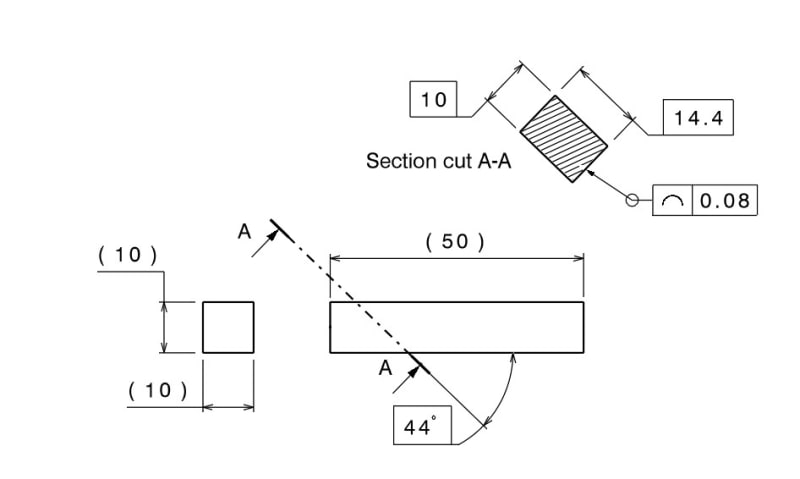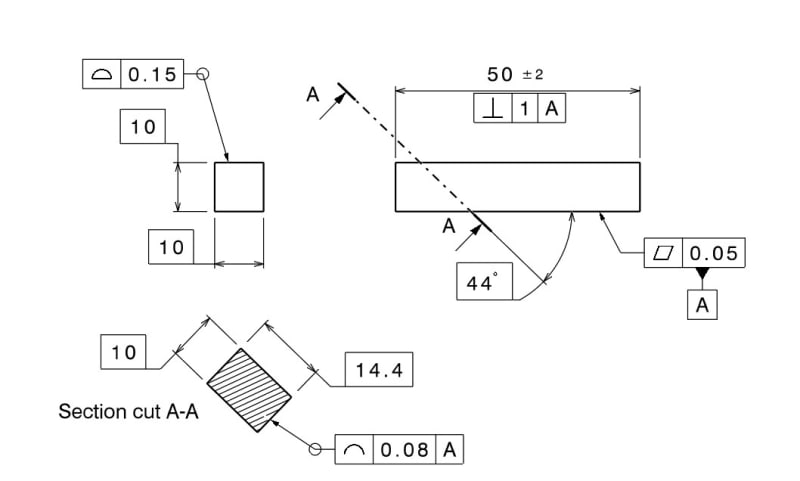CTengIS
Mechanical
- Jul 25, 2023
- 42

Hi, I would like your advice weather this application of profile of a line is valid according to ASME Y14.5.
In case you are wondering what this is for, I have a pile of square 10X10 mm stock bars that I want to later be cut to slices at that angle and get the 10X14.4 mm dimensions accurate within 0.08 mm all around. I'm fine with the angled edges that will result in the periphery. I'm not sure how accurate the bars are and I want them sorted according to this profile requirement. I know I can just calculate the required tolerance on the 10 mm square cross section but I want to try this method anyway. So please comment on weather this is valid per the standard. Thanks.

